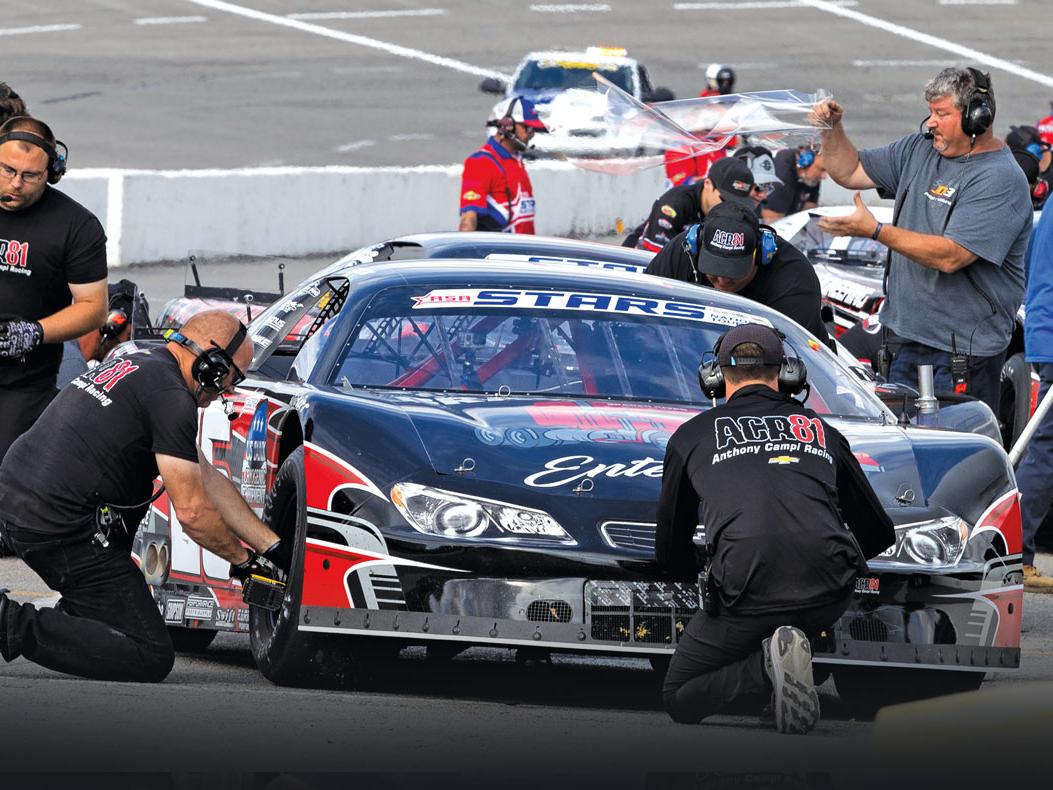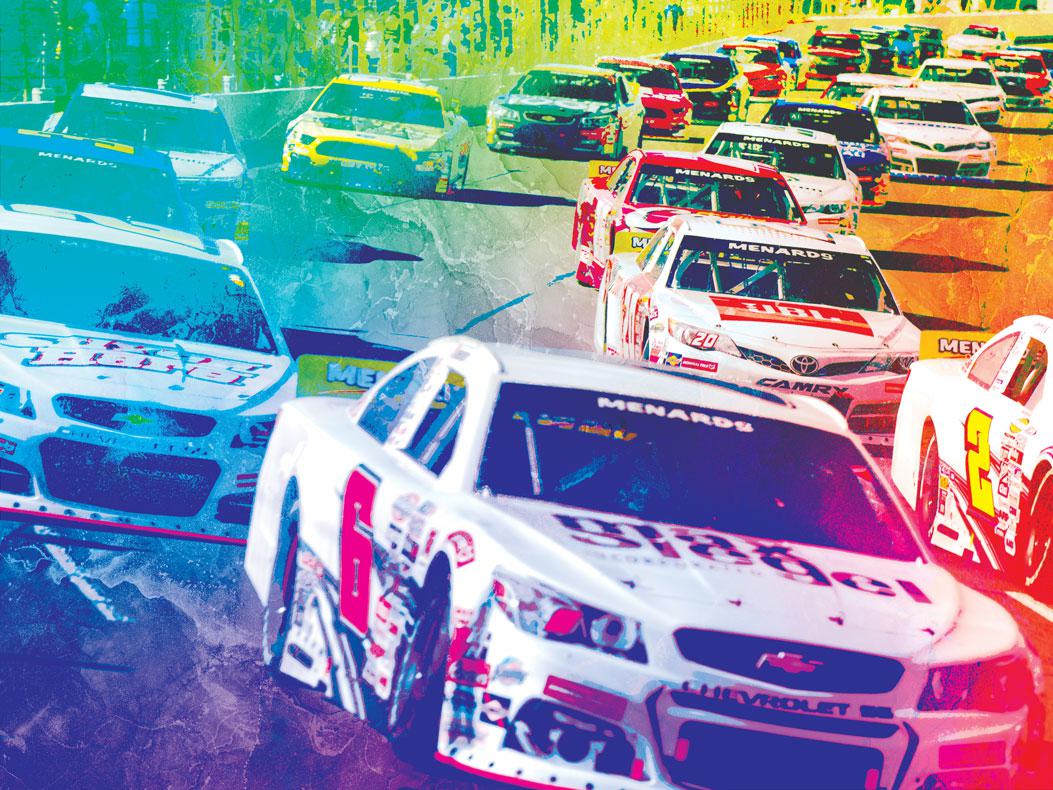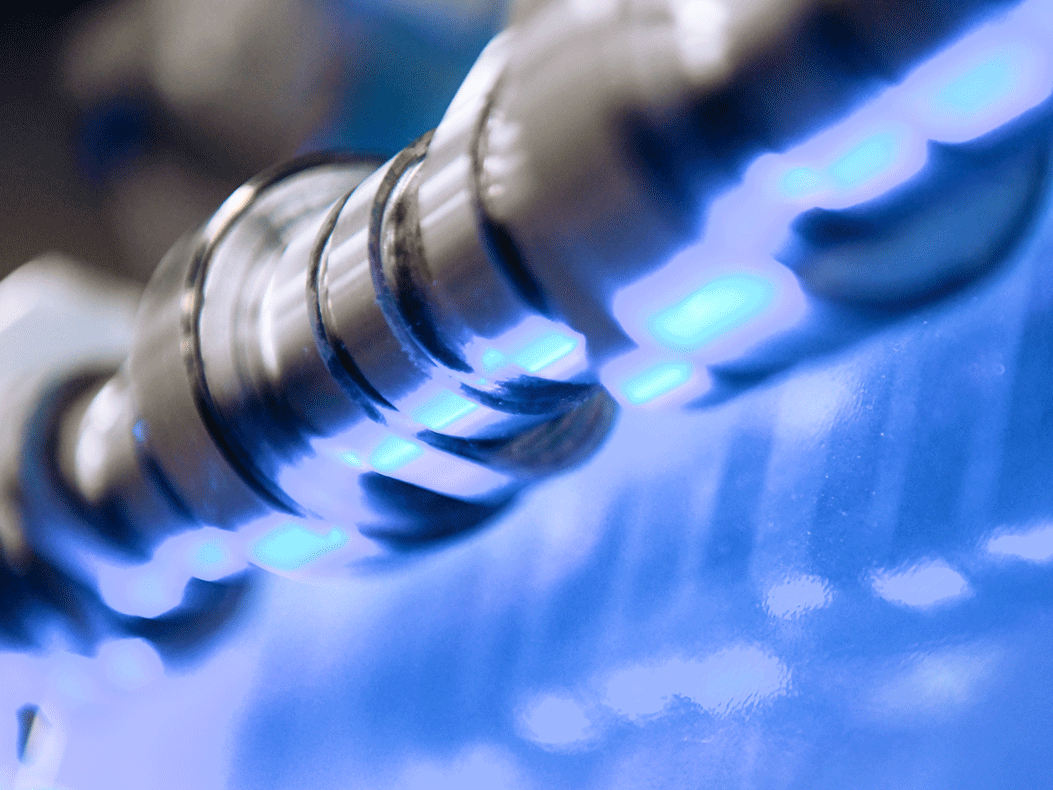Power Enhancements
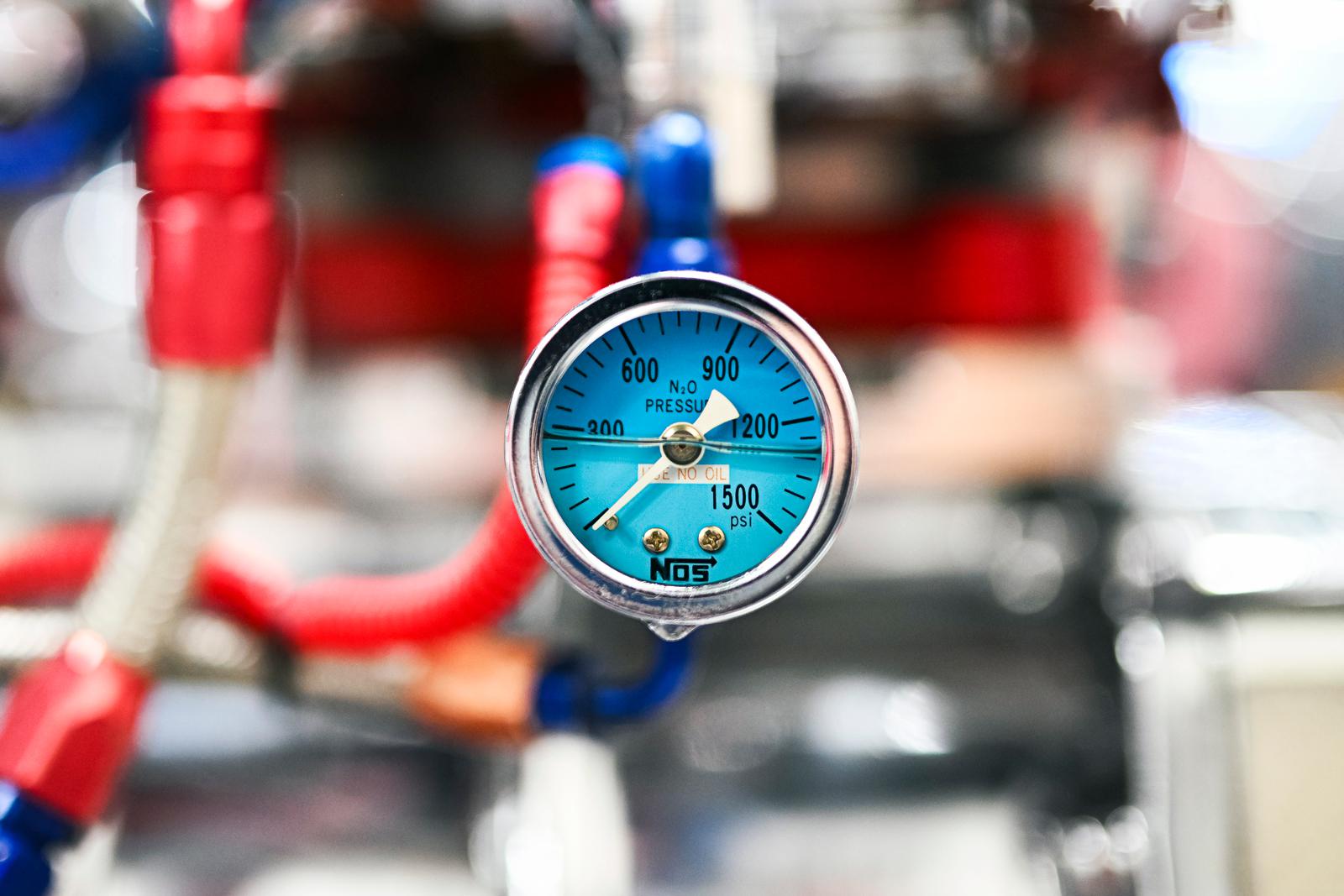
Exploring sales opportunities for ancillary products in addition to the power adder itself.
No power adder works in a vacuum (if you’ll excuse the lame pun). Adding a supercharger, turbocharger, or nitrous oxide injection to an engine is an increasingly easy way to make power, but those adders require a number of other components to not only attach them to the engine, but also to get the most from their power-making potential. We spoke to experts across the power adder segment to find out what ancillary products are needed to make these systems work, as well as some nice-to-have options to make tuning easier. These products represent sales opportunities for manufacturers and installers that will not only improve their bottom line but also their clients’ satisfaction with these systems.
Turbochargers
Reggie Wynn of Precision Turbo & Engine of Crown Point, Indiana, started his list of accessory products with the basics. “Some of the things that are an afterthought, that racers forget about, are flanges and clamps. The flange/clamp that mounts your turbo on the exhaust manifold and then the downpipe flange/clamp for the exhaust.”
Next on his list were wastegates, “or if the turbo you’re buying has an internal wastegate, those are called actuators. There are some aftermarket actuators that guys go with that can outperform the stock ones, which allow you to run more boost than the actuator the factory turbo comes with.”
Wynn also suggested the use of a boost controller, either manual or electric, that “hooks to the wastegate and allows you to fool the wastegate to open later to help you run more boost.”
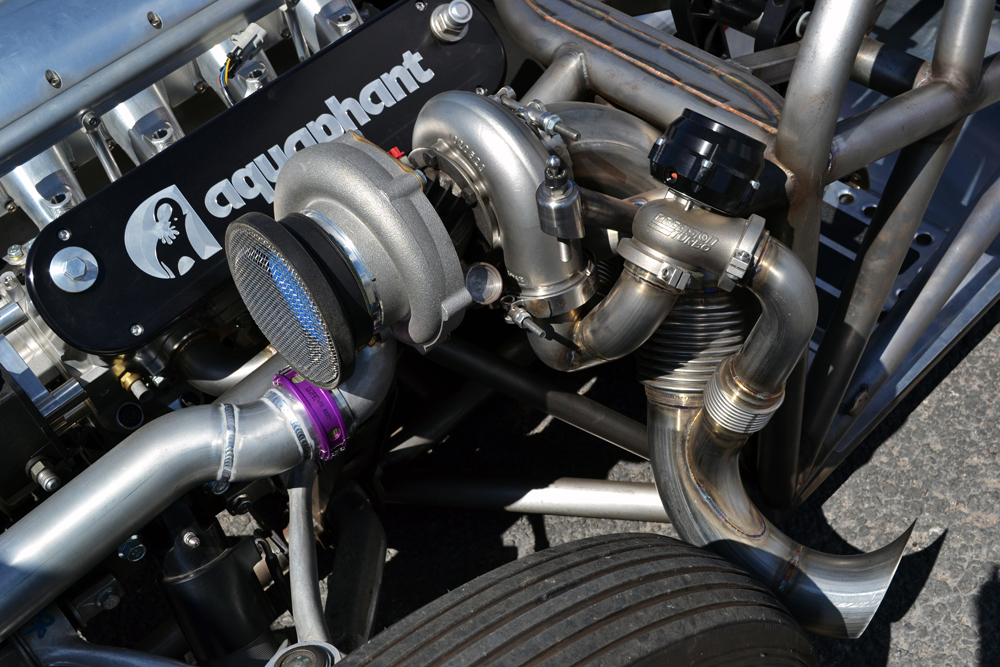
Hart’s Turbo of Fayette, Missouri, doesn’t sell ancillary products other than flanges and clamps, but the company is a master distributor for Turbosmart of Ontario, California, and has done much R&D work with racers using Turbosmart’s wastegates, particularly its new electronically controlled versions. “Their products are a game changer in the turbo market for what we’re doing and where we’re going,” said Roger Conley of Hart’s. “Turbocharging is in the midst of changing over the last two years, migrating to controlling boost on what we call the ‘cold side,’ where we take boost and vent it to atmosphere on the compressed side of the engine package. It gives us the ability to keep the shaft speed of the turbocharger up, and it responds quicker.”
Conley has seen, “in the last 14 months, cars are running their 60-foot with the kinds of short numbers the centrifugal supercharger cars are running. They’re keeping their shaft speeds up, and there’s no lag.” He cited one example, working with no-prep racer Larry Larson, where replacing a pair of conventional Turbosmart wastegates with a pair of the electronic wastegates “made two more pounds of boost on the starting line just because the E-gates were holding the gate shut from the pulses and backfires trying to force those valves open.”
Hart’s also sells turbochargers to truck and tractor pullers, but “pulling is a whole different animal,” Conley pointed out. “They don’t run wastegates in pulling. We size the turbo based off the engine platform. A diesel doesn’t even have a throttle body. It’s all controlled by fuel. So we have to be even better at sizing the turbine wheel and compressor wheel the right way to not get into an overspeed situation.”
Ryan and Deena Salenbien of Salenbien Performance of Maybee, Michigan, developed their hub-free Apex turbochargers for drag racers and truck and tractor pullers. They see some of these ancillary products as power adders themselves.
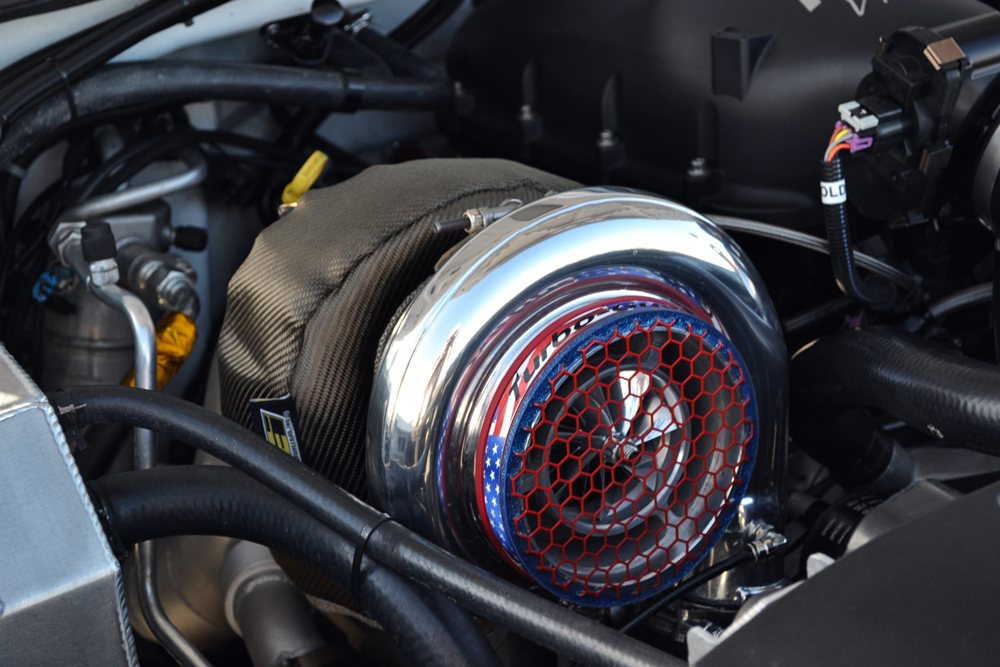
“An intercooler is definitely a power adder,” Ryan said. “Intercoolers take the hot compressed air and shrink it down as it gets colder to go into the intake manifold. It definitely makes more power, whether it’s an air-to-air or water-to-air cooler. There’s performance advantages to running them.” He did point out, though, that “not all divisions or classes allow for an intercooler.” So even though Apex Turbo offers an intercooler “that works really well with our turbocharger,” it’s up to the racer to determine if it’s legal in their class.
The Salenbiens have also designed velocity stacks for their turbochargers. It’s a concept any old-school hot rodder will recognize: “It’s a cone-shaped device that helps gather and re-align the airflow and direct it to the compressor inlet of the turbocharger,” Ryan said. “It will provide more flow through the turbo and will increase the performance of the turbocharger.”
While most accessory products will help improve the power adder’s performance, the Salenbiens also mentioned products to improve a turbocharger’s safety. “We’re working with Suncoast Products on a turbine containment ring for turbochargers,” Deena said. “It’s designed to support the turbo in a way where if there was a turbine wheel failure, it would get stopped so that none of those turbo components could enter into the engine or atmosphere and wreak havoc.”
Guards in front of a turbo are also products that can safeguard a turbo, like those from Turbo Guard. Turbo Guard supplies “a screen mesh that you put on the face of the turbocharger compressor inlet to keep any foreign materials from hitting or sucking into the compressor wheel,” Ryan added.
Turbocharger service, “inspection after use and also keeping up with the latest advancements,” is also something offered to Apex customers, Deena said. “We have a whole department that does service and refurb work. We advise all our customers to not take the turbo apart and send it back to the manufacturer to have it professionally looked at, cleaned, inspected, and rebalanced” and repaired if necessary.
Superchargers
Nearly every supercharger manufacturer we spoke to put fuel system upgrades at or near the top of their list of ancillary product requirements, whether it was for a Roots-style or centrifugal blower. “For the average guy who’s building 1,500–2,000 horsepower, you buy your blower and then you’re looking at your fuel system,” said Jimmy Martz of Vortech Superchargers, Oxnard, California. Whether that means upgrading just the fuel pump or the pump and fuel delivery device(s) depends on the application, he added. “But the PRI crowd is probably going to need both. You’re looking at a minimum to replace your fuel injectors and, depending on your horsepower goal, you will need a fuel system to match that.”
For Blower Drive Service (BDS) in Anaheim, California, fuel system recommendations are based on “whatever the setup of the customer is doing, as far as the engine size and rpm,” said Kurt Gordon. “We typically tell them what CFM they need, whether it be a carburetor or throttle bodies.”
“A lot of our kits come with fuel injectors,” said Dan Bronsten of Magnuson Superchargers, Ventura, California, “but they’re only good to a certain power level. Beyond that folks would upgrade fuel injectors, and then the next thing is the fuel pumps.”
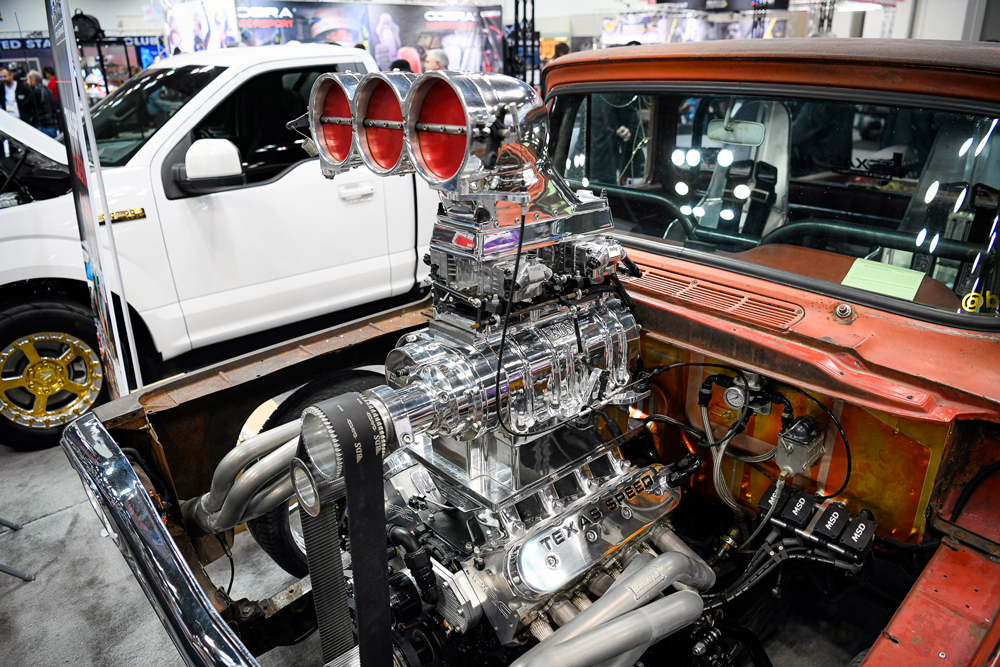
“Once you build your fuel system, now you’re looking at, who are you going to use for your ECM?” Martz added. “Are you going to use FuelTech, Holley? You should use whoever you’re familiar with. Then you’re going to need to add bypass valves, depending on the horsepower you’re trying to make. We have three or four different sizes to choose from.”
As with turbocharging, the use of an intercooler with a supercharger is dependent on class rules. Racers will likely need “some sort of really large, custom, air-to-water or air-to-air cooler,” Martz said. “And then there are guys who will cool with fuel instead. They’ll run methanol, M1, or E85, and that has a cooling effect of its own.” But, he cautioned, “now you’re looking at very large injectors, corrosive fuel, and all the things that go with running an ethanol-based fuel.”
All of Magnuson’s kits come intercooled, said Bronsten, “and most of our systems are specific to an application where we’ve designed the biggest intercooler we can fit in there.” Magnuson’s position in the market is different from the rest of the sources we spoke with in that it has chosen to focus on manufacturing supercharger kits that are EO certified, explained Kim Pendergast. So the company doesn’t recommend end users who are driving their cars on the street to upfit a kit with anything that isn’t EO certified.
But Magnuson does work with racers, and with tuners and upfitters with racing clients. One such company is VF Engineering in Anaheim, California, which offers as its “flagship system” a Magnuson TVS 2300-based supercharger system for Lamborghini Huracán and Audi R8 models.
“We create a supercharger kit that incorporates the power adder,” said Nik Saran. The kit’s primary components include the intake manifold, “either a one- or two-piece aluminum manifold, which is bolted to the engine’s intake system and also incorporates the heat exchanger for the after-cooling system we include”; the FEAD, or front-end accessory drive, which revises the belt-drive system to drive the supercharger by the engine’s crank pulley and keep the internal speed of the supercharger rotors within an optimal range for power delivery and volumetric efficiency; an air-to-water cooling system, “a separate water system isolated from the engine’s water system with its own reservoir and a pair of radiators in the stream of incoming air from the vehicle’s side vents”; a larger fuel pump, “as we do need more pressure to deliver the volume of fuel that we’re requesting through the software for the fuel mixture required to keep EGTs within the range we want”; and the ECU calibration, “which we gave extra attention to detail, knowing how essential it is for reliability,” Saran said. VF Engineering’s calibrations “do not disturb” the engine safety system tolerances—ignition retard, temperature systems, and NOx systems—to prevent the engine from going into limp-home mode.
With the proper fuel octane and ignition timing, these kits can produce “a gain of 180 hp at all four wheels,” Saran said. Currently the kit is in the EO testing process, so it is for off-road use only in emissions-regulated states like California.
Nitrous Oxide
As nitrous oxide injection is fundamentally different from the forced-air power adders mentioned above, so too are its accessory components. Chris Isbel of Nitrous Express in Wichita Falls, Texas, ran through a list of what he termed “necessity items” as opposed to components racers could consider as options.
First was a nitrous controller of some kind, “whether it’s a window switch or our progressive controller. Those would give you the ability to activate and deactivate the nitrous.” The window switch is essentially “straight on-off activation,” he explained, while the company’s Maximizer 6 progressive controller can activate up to four different nitrous stages based on rpm, mph, throttle percentage, or boost pressure. It also allows the racer to save multiple tunes. (On Isbel’s not-mandatory but “nice to have” list is the company’s touch-screen display for the Maximizer 6 “for making changes on the fly.”)
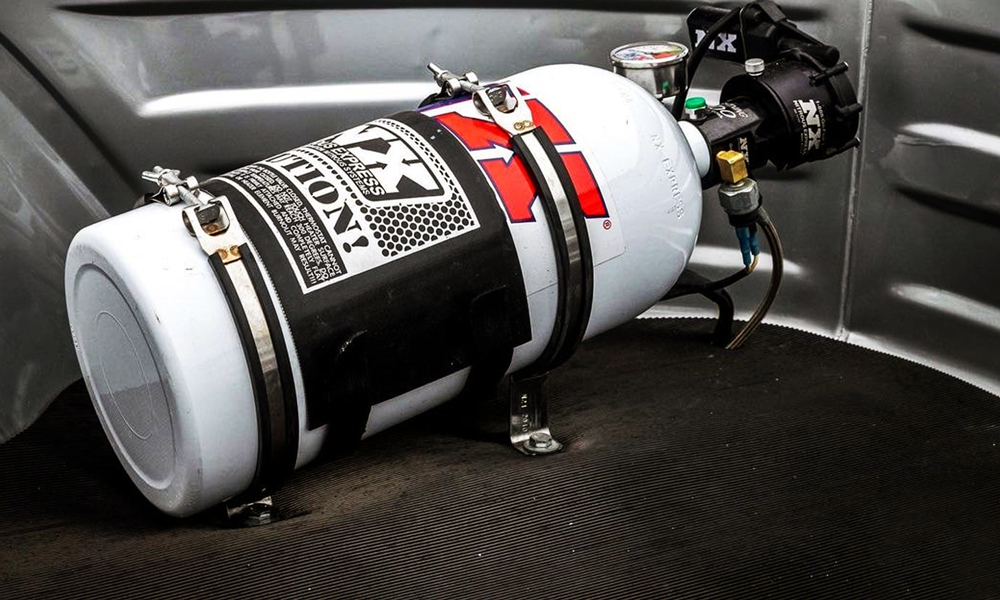
Next on the list were a nitrous pressure gauge and a bottle heater. “Nitrous is run off bottle pressure,” he pointed out, so the gauge “allows you to monitor that pressure, and the heater is there to maintain that pressure.” A purge kit would “round out a good, core setup,” and then options might include billet bottle brackets instead of the standard stainless brackets, and dual vents for the purge kit.
There are several places a racer can go to refill nitrous bottles. One is Airgas, an industrial supplier “that has a store in every major town in the country,” Isbel said. Likewise, some welding supply stores offer nitrous oxide in addition to oxygen and acetylene. There are also local race shops that do refills, and this could provide an additional revenue stream for a business not currently offering the service.
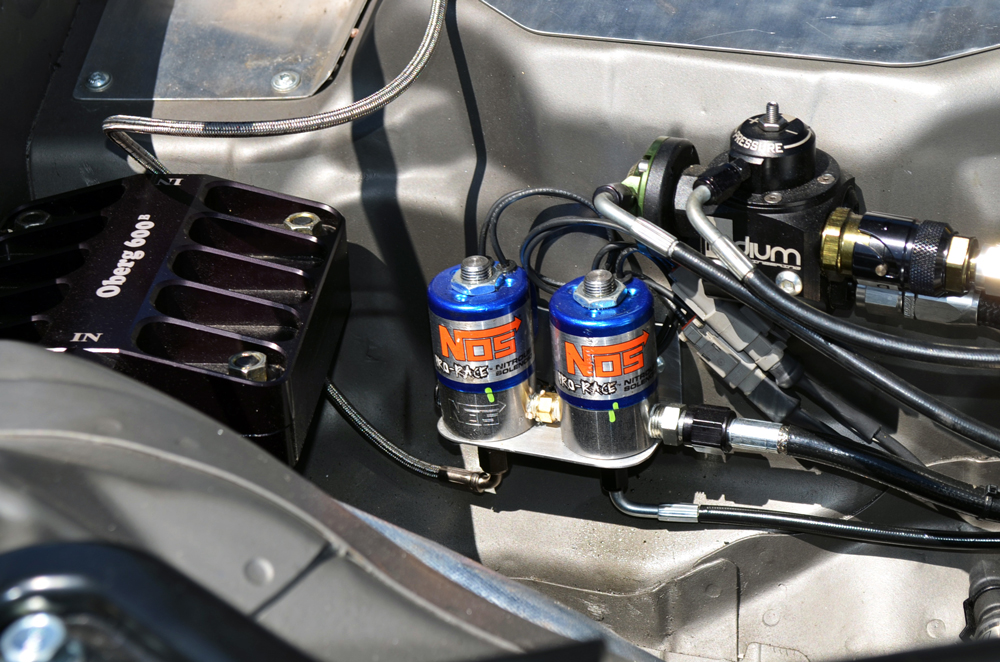
Nitrous oxide systems don’t require much maintenance, Isbel said, depending on how much and how hard the racer is running. “I have customers who have been using the same solenoids for five, six years now with no issues whatsoever. But then a racer who’s racing every Friday night making five, six passes, going again on Saturday making another six or seven passes, they can get about two seasons easily, maybe more.” The solenoids are something the racer can check for themselves. “Just open it and see how dimpled the piston is and go from there.” Should repairs be needed, Nitrous Express offers solenoid rebuild kits.
Kits or Components?
Many power adder manufacturers sell their products as complete kits, with many or most of these accessories packaged with the adder itself. Or they try to take some of the guesswork out of the process by researching the ancillary products for the customers. On the day we called him, Gordon of BDS was “placing a big order with MSD to get distributors, coils, and boxes in for us to sell as an add-on to our blower. I will try to find what goes with it so we can put it on our website. That way, when they order the blower, they can just purchase these other components at the same time instead of having to take another step and go on Summit or JEGS to try to find something.”
While some racers might prefer to scour websites, forums, and fellow racers’ opinions to craft a system of their own, Gordon didn’t recommend it.
“It would be very, very hard for them to try to put together something because they don’t know, for instance, how far the crank snub or the standoff or anything lines up to the drive accessories and things like that. In the kit, we give you the spacers, we give you the V-groove pulley, the manifold, the snout, the belt, the idler, we give you everything in the kit so you can pretty much just bolt it on and then pick out whatever fuel you’re going to put into it.”
Sources
Blower Drive Service (BDS)
blowerdriveservice.com
Hart’s Turbo
hartsdiesel.com
Magnuson Superchargers
magnusonsuperchargers.com
Nitrous Express
nitrousexpress.com
Precision Turbo & Engine
precisionturbo.net
Salenbien Performance/Apex Turbo
apexturbo.com
Turbosmart
turbosmart.com
VF Engineering
vfengineering.com
Vortech Superchargers
vortechsuperchargers.com
 MEMBERSHIP LOGIN
MEMBERSHIP LOGIN JOIN PRI
JOIN PRI
